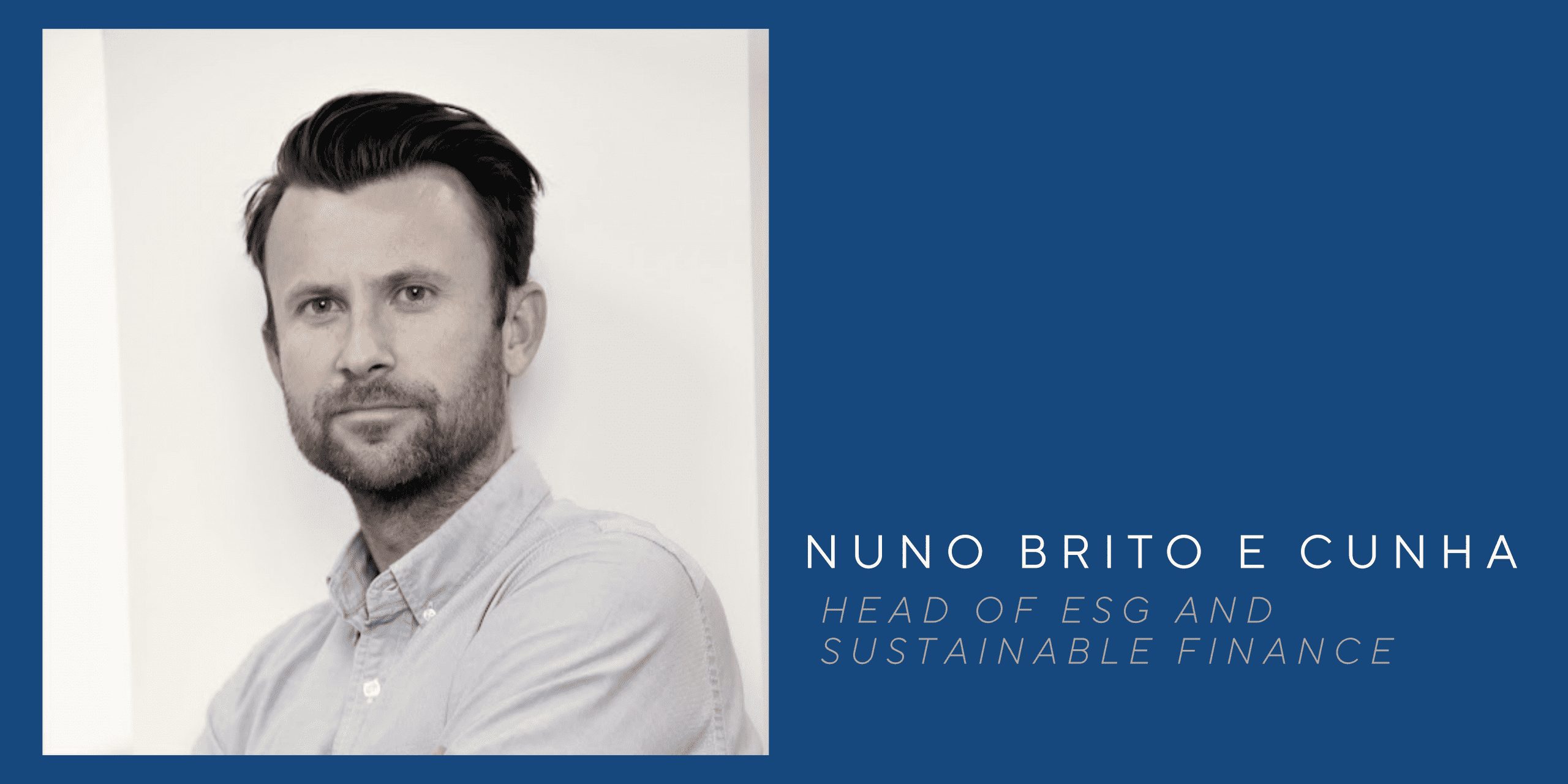I recently featured in a panel discussion on carbon neutral investment portfolios at an event hosted by GAM Investments and Nova School of Business & Economics (SBE) in Lisbon, Portugal. The event centred around new investment paradigms impacting markets today.
I had the pleasure of being on a panel with both financial and academic experts;
• Vanessa Sinclair, Equity Investment Emerging Markets Specialist at GAM
• Jorge Teixeira, Executive Member of the Board – BPI Gestão de Ativos
• Nuno Brito e Cunha, Head of ESG and Sustainable Finance at Eight Associates
The session explored:
• How to measure an investment portfolio’s carbon footprint,
• The impact of COP26 and subsequent regulation changes,
• Voluntary carbon offsets,
• And finally, could impact weighted accounting be the future of portfolio selection.
What gets measured, gets managed
COP26 was unsurprisingly one of the main focuses of the session. To achieve real climate action, every company, financial firm, bank, insurer, and investor will need to make real changes. A further tightening of climate focused regulation is expected following the Conference in Glasgow and it was clear from the discussion that we need to act now to be prepared for these. A high carbon price with forecasts of further price hikes and proposals like the EU Carbon Border Adjustment Mechanism have also set the stage for immediate action.
The importance of a robust engagement policy from asset managers was put forward by all speakers. Of the different schools of thought that exist in the context of sustainable investment, I highlighted two. On the one hand, it is very easy to build a reduced carbon portfolio. How? Just remove companies with exposure to fossil fuels and you have automatically decarbonized your portfolio. It’s an approach that we often see referred to in the press as what is expected of the asset management industry.
However, I think the opportunity lies with another approach. Carbon Neutral and Net Zero are typically referred to as targets that we must reach but they are also a transition and since a transition doesn’t happen overnight, we have to take a phased approach. I don’t believe the path is divestment, rather a path of working together with carbon emitters in order to drive their sustainability goals and help them decarbonise.
In order to be able to do this we need a bottom-up approach to disclosure and measurement. The reporting and verification strategies of investment funds is critical, alongside the importance of data granularity. Because after all, what gets measured, gets managed.

From Application to Practice
The Carbon Disclosure Project (CDP) was spotted by all the panellists. This mission hopes to bring sustainability reporting and risk management as a business norm in the future. The importance of reach and acceptance of this disclosure framework in the investment management community was noted.
Among the conference attendees ESG is still being viewed as an extra cost to business, rather than a way to mitigate future risk and make better investments with higher returns. Individuals still want higher investment returns, but there is little consensus amongst investors and academics that ESG has a strong correlation with long-term profit. This is evidenced throughout the pandemic as retail investors diverted money away from sustainable investment viewing it as a luxury. Institutional investors were the opposite and drove capital to sustainable investment funds according to Miguel Ferreira, Head of Responsible Finance at Nova SBE.
ESG Investing
In less than 20 years, the world of ESG has cultivated from corporate social responsibility initiatives. ESG and sustainable finance now have fundamental impacts. This evaluation of a firm’s collective conscientiousness has a strong effect on future enterprise value. Almost a 525% increase in capital flowed into ESG linked products since 2015 and ESG assets are expected to hit $53trillion by 2025.
Below are some other areas that were touched on about measurement and reporting;
• The ‘S’ in ESG has gained more importance but is very difficult to measure,
• Passive investing (ETFs, Index products) are the biggest enemy against sustainable investing. This is because it excludes the engagement factor, therefore active investments are preferred,
• ESG investing in Emerging markets brings an extra level of difficulty, and this is because of the poor levels of disclosure or governance,
• Climate 100+ was mentioned as a collaborative working group of around 600 of the world’s biggest asset managers whose mission is to engage with some of the world’s biggest polluting companies.
Robust Engagement Policies
It was clear from the discussion that there is a significantly emerging interest in Carbon Neutral investment portfolios. However, the hesitation lies within the metrics. For investment firms to be confident in the added value of Carbon Neutral portfolios, there needs to be much more clarity on what is being measured. From the company’s carbon footprint data, through to the details of how an organisation credibly achieves a Carbon Neutral status, investments firms still seem to be acting with caution. That’s why it’s vital for organisations to verify and certify their carbon journey with independent third-party bodies that adhere to internationally recognised standards. This is crucial for robust engagement policy in the investment management space.

Nuno Brito e Cunha
Our Head of ESG and Sustainable Finance has experience in Product Life Cycle Assessments (LCA), UN SDGs Framework application, B-Corp Certification, TCFD Reporting, and Science Based Targets (SBTi) reporting. Focusing on embedding sustainability across organisations, the Circular Economy and how it’s inspiring a shift to new business models.
Get in touch with Nuno, and our team at Eight Associates and NCS, to find out more about carbon neutral portfolios here.






